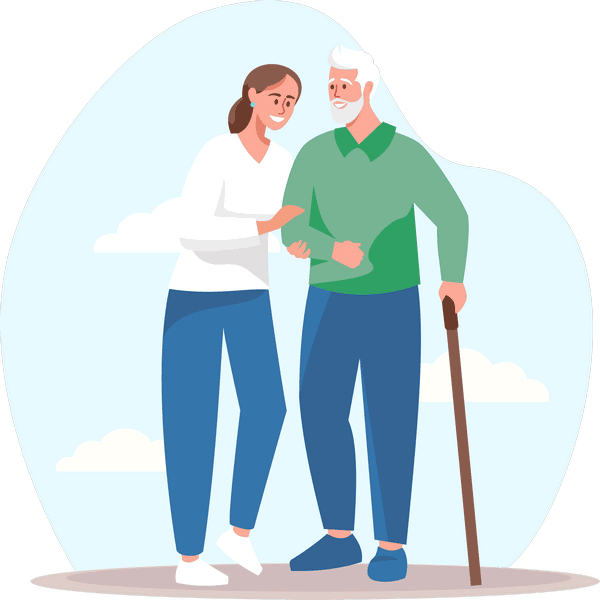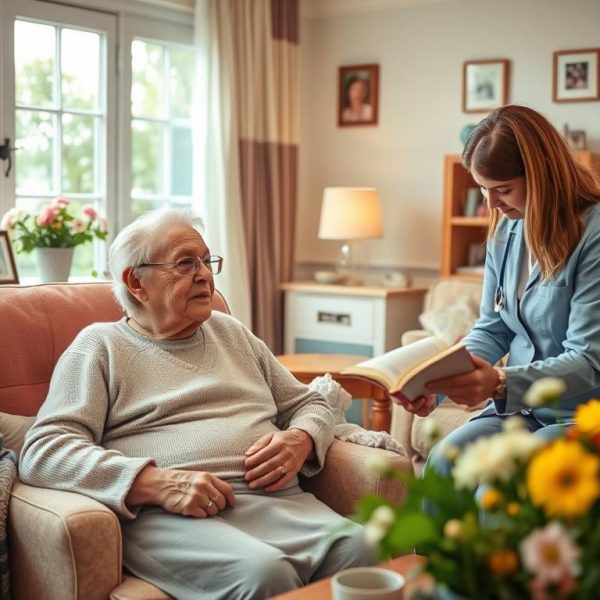Are you or someone you know struggling with mobility issues? Generally mobility can decrease as a person ages, however when someone experiences an injury, has surgery or has a long-term health issue, the difficulties may get worse. As it becomes harder to walk around the house or get out of bed, it can also become dangerous. It’s critical to understand that these obstacles can impact a person’s mental health and sense of independence in addition to their physical limitations.
This is where mobility and transfer support services come into play. These services, which are meant to lend an extra hand, let people move around their homes safely and comfortably. Having that support can make all the difference, whether it’s for walking, standing, or moving from one area to another.
In this article we will explore how these services, which provide a newfound sense of autonomy and safety, might enhance you or your loved ones life. Come learn about the value of mobility support and the long-term benefits of this assistance.
The Basics: Mobility and Transfer Care
The act of just simply moving from one area to another is something that many people take for granted. However, every step and movement can be difficult for people with mobility issues. Mobility and transfer assistance is a type of solution that keeps people safe at home or in care facilities while allowing them to retain some degree of independence and dignity. Through this service, clients can make sure they are safe to prevent falls or accidents, as well as receive extra assistance with moving around.
What is a Mobility and Transfer Assistance Service?
Fundamentally, mobility and transfer assistance refers to a variety of services intended to assist people in making safe movements. This involves assistance with walking and going from one place to another as well as getting in and out of beds, chairs, and wheelchairs. This service makes sure that mobility doesn’t become a hindrance to day-to-day living by functioning as an extension of one’s skills.
Who Can Benefit from Mobility and Transfer Assistance?
Many clients can benefit from mobility and transfer assistance. Seniors, individuals with impairments, patients recovering from surgery, and anybody else who finds it difficult to move around independently may find this service invaluable. In addition, people with neurological disorders, musculoskeletal problems, or any other illness that impairs strength or balance will find it especially beneficial as well.
How Does This Service Work?
Mobility and transfer support services are tailored to each individual’s specific needs. That said, professional caregivers are at the heart of these services, providing the required physical support and implementation of safe practices to ensure a client’s well-being. They function as an extension of the client’s abilities, assisting in motions that would be difficult or dangerous to do alone.
These caregivers’ purpose is not just to reduce the chance of falls and other accidents, but also to promote and empower clients to live an active and mobile lifestyle in a safe manner. Our caregivers assist in creating confidence and promoting independence in daily activities by using this supporting approach.
How Can Mobility and Transfer Assistance Help with Everyday Tasks?
Mobility and transfer aid are critical in assisting those who are having difficulty with everyday tasks. This service helps with fundamental daily activities such as dressing, using the restroom, bathing, moving from the bed to a chair, getting to a table to eat, among others. Caregivers provide the essential stability and support, allowing these tasks to be completed with dignity, improving the individual’s quality of life and developing increased independence.
That being said, when someone is experiencing issues with mobility, they may also be struggling with regular household tasks as well. For that reason at ComforHome we offer home support services of all kinds to help each of our clients. From laundry services where we wash and dry clothes, dusting and general cleaning, personal hygiene care such as bathing and nail care, all the way to meal preparation, our experts handle all of these tasks to allow the client to rest, recover or simply relax.
How Can This Assistance Help With Safety Precautions?
Mobility and transfer aid is more than just helping someone move around; it’s also a way to keep them from getting injured. Caregivers work hard to make sure the home is safe by suggesting and setting up home changes like grab bars, ramps, and stairlifts that can greatly lower the risk of falls. They also know how to use mobility tools correctly and show safe ways to move from one place to another. This service gives families peace of mind because they know that their loved ones are always safe and protected by an extra layer of security.
The Emotional Benefits That Come With Extra Assistance
Mobility and transfer assistance also provides psychological and emotional support in addition to physical assistance. It can improve the client’s mood by encouraging and tailoring better exercise routines, lessens helplessness, and fosters social interactions, all of which contribute to the maintenance of interpersonal relationships.
We also offer occupational therapy to clients who are looking to learn effective ways to manage their condition and enhance their general sense of independence.
Start Using Mobility and Transfer Assistance with ComforHome
Offering individualized mobility and transfer assistance is something ComforHome is proud of. Since every person’s demands are different, we customize each of our services to meet those needs specifically. Don’t let limited mobility keep you or your loved ones in a life of limitations. Embrace every day with confidence when you have ComforHome’s mobility and transfer assistance. Get in touch with us to find out more about how we can assist you on your path to greater freedom and better quality of life. simply give us a call or the service quote form below to get started.








